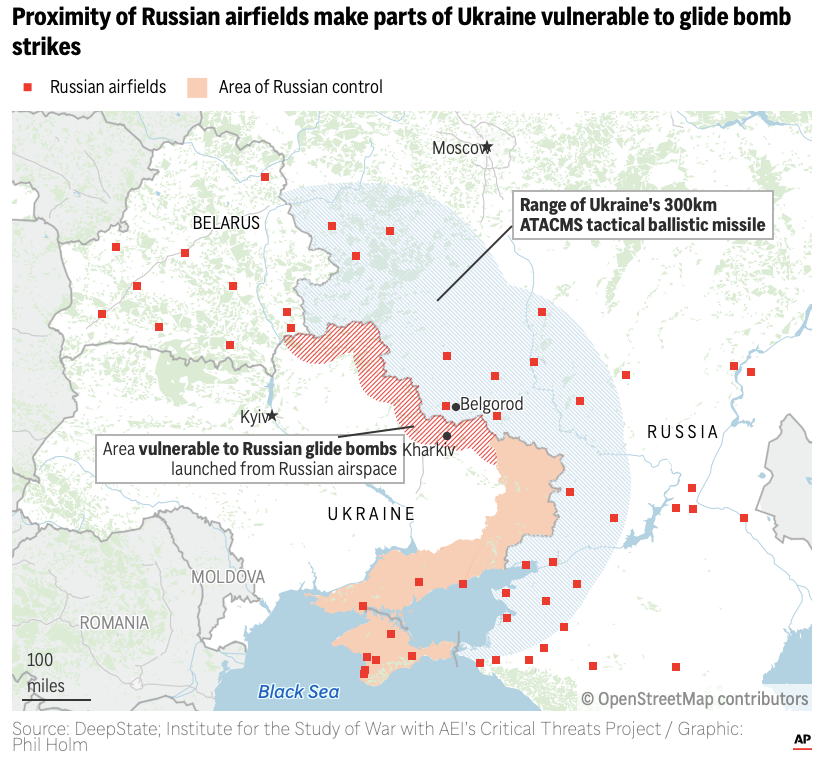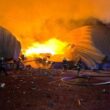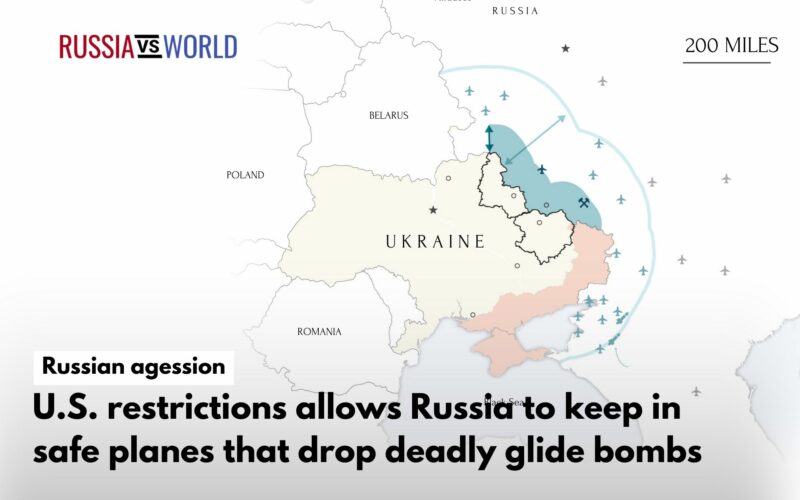Letting Ukraine strike back in Russia with U.S. weapons has reduced missile attacks on Kharkiv but not stopped planes that drop Russian glide bombs.
For months, Ukrainian officials complained bitterly about restrictions on using Western-supplied weapons against targets in Russia, including the airfields that house Russian bombers. A new U.S. policy allowing Ukraine to fire certain American weapons at Russian territory has led to a reduction in some Russian attacks but still restricts the range enough that it prevents Ukraine from hitting key airfields, two Ukrainian officials said. Those airfields are used by Russian jets that drop the deadly glide bombs now inflicting the greatest damage on military positions and civilians.
The bombing of the Epicenter in Kharkiv killed 19 people, including two children. In all, glide bombs have hit the city more than 50 times this year, according to Spartak Borysenko of the Kharkiv regional prosecutor’s office.
He showed investigation documents to AP that identified at least eight Russian air bases used to launch the attacks, all within 100 kilometers (60 miles) of Ukraine. He said at least one of the munitions had foreign electronics and was made in May. That date suggests Russia is using the bombs rapidly and that it has successfully circumvented sanctions for dual-use items.
In all, the DeepState map shows 51 bases used by Russia within 600 kilometers (370 miles) of Ukrainian-controlled territory, including three in occupied eastern Ukraine, six in the illegally annexed peninsula of Crimea, and 32 in Russia.

“The greatest strategic advantage Russia has over Ukraine is its advantage in the sky,” Zelenskyy said last week. “This is missile and bomb terror that helps Russian troops advance on the ground.”
Russia launches up to 100 guided bombs daily, Zelenskyy said. Besides missiles and drones, which Russia already routinely uses for attacks, the bombs cause “an insanely destructive pressure.”
Biden’s change allowed Ukraine to target “areas where equipment is concentrated and locations from where missile strikes are launched on the territory of Ukraine; not a single S-300 missile has hit Kharkiv. This is a fact,” said Denys Yaroslavsky, commander of a reconnaissance battalion in Ukraine’s 57th Brigade. “At the same time, this has not significantly changed the situation directly on the front line.”
“The city of Vovchansk,” he added, “continues to be destroyed by aerial bombs, artillery and everything else they have.”
Ukraine is waiting for its first batch of U.S.-made F-16 fighter jets, which could help deter Russia from dropping so many of the bombs. Ukraine is also developing its own such bombs to drop on Russian positions, although it’s unclear how effective they may be.
Even under the new rules, however, President Biden has refused to greenlight the use of long-range U.S. weapons, such as the Army Tactical Missile System, or ATACMS, leaving Ukraine to continue to rely on its own homemade drones for strikes deeper inside Russia.








